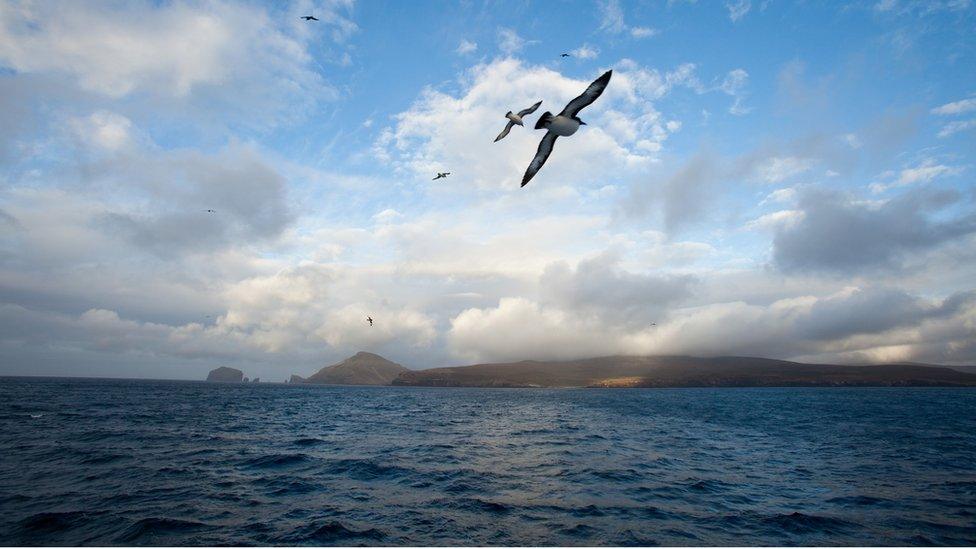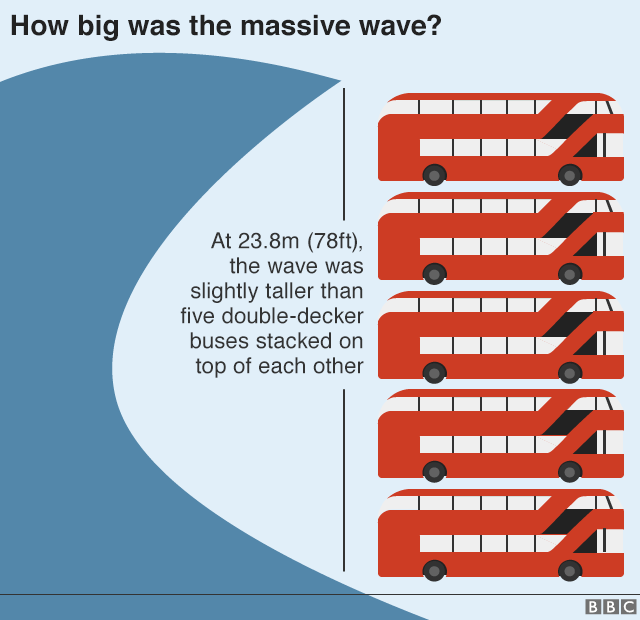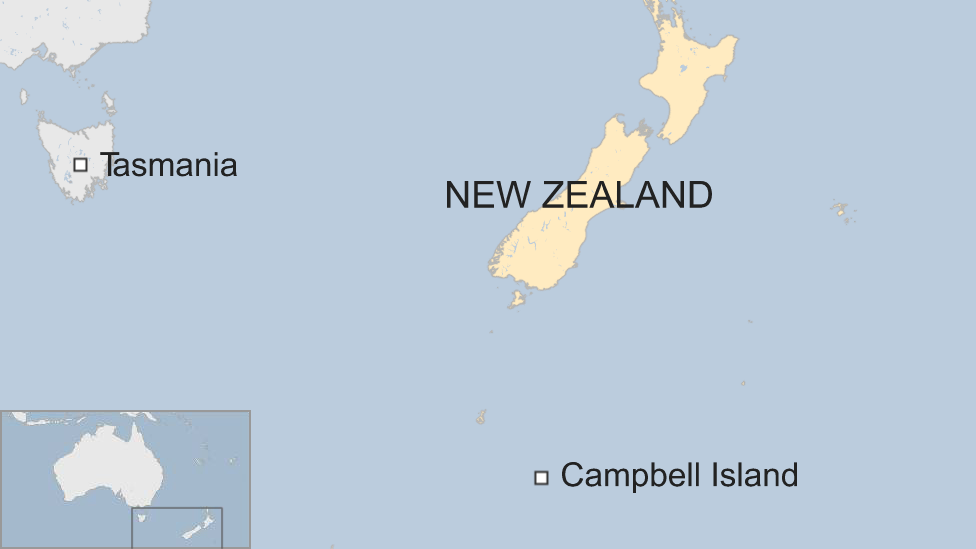Massive wave is southern hemisphere record, scientists believe
- Published

The wave was measured by a buoy at Campbell Island in the Southern Ocean
Scientists in New Zealand have documented what they believe is the largest wave ever recorded in the southern hemisphere.
The 23.8m (78ft) wave was measured by a buoy on New Zealand's Campbell Island in the Southern Ocean on Tuesday, the country's weather authority said.
It eclipses a 22.03m wave that was identified south of the Australian state of Tasmania in 2012.
Larger waves have been recorded in the northern hemisphere.
The Meteorological Service of New Zealand (MetService) installed its solar-powered buoy in March. The area is known for big storm activity, but waves had been previously difficult to measure.
Bigger waves possible
The "eight-storey high" wave was generated by a deep low pressure system and 65-knot winds, said MetService senior oceanographer Dr Tom Durrant.
"This is a very exciting event and to our knowledge it is the largest wave ever recorded in the southern hemisphere," he told the BBC.

The buoy operates for 20 minutes every three hours. Dr Durrant said it was possible that even bigger waves were generated by the storm but not recorded.
The World Meteorological Organization does not hold official records on individual wave heights. Instead, it records an average of successive swells - a measure known as the "significant wave height".
During the storm recorded by New Zealand, the significant wave height was 14.9m.
That is a record for the Southern Ocean but below a 19m mark measured by a buoy in the North Atlantic, external in 2016, Dr Durrant said.
He said storms moved across the Southern Ocean largely unhindered due to a lack of land.
"[It is] the engine room for generating swell waves that then propagate throughout the planet," he said.
"Indeed surfers in California can expect energy from this storm to arrive at their shores in about a week's time."
